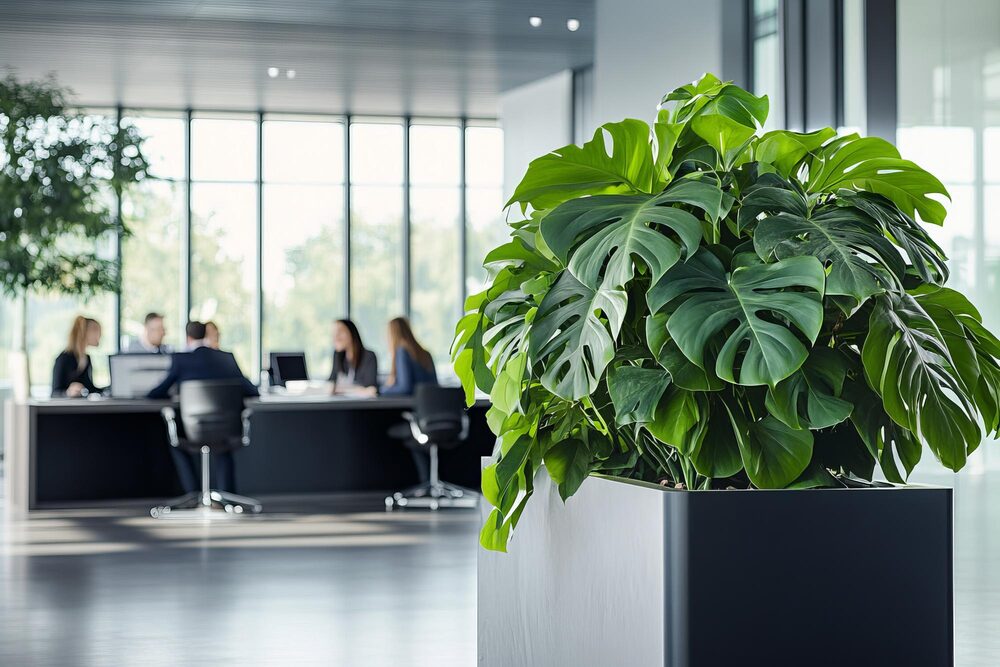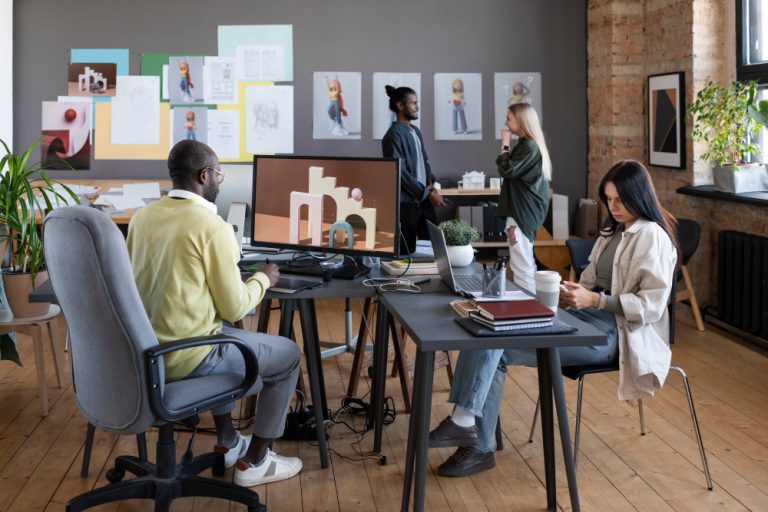What Is Biophilic Design and Why Is It Trending in 2025?
Biophilic design is more than a buzzword. It’s the science of integrating nature into built environments to improve human well-being.
In 2025, Silicon Valley companies are embracing biophilic offices to reduce stress, improve focus, and support employee health — all while meeting sustainability goals.
For Bay Area businesses competing for top talent, a natural, wellness-driven workplace is no longer optional — it’s a competitive advantage.
The Science Behind Biophilic Workplaces
Studies show that exposure to natural elements at work can:
- Reduce stress by up to 15%
- Increase productivity by 6%
- Boost creativity and problem-solving skills
In tech-heavy environments like Palo Alto or Mountain View, where employees face long screen hours, biophilic design balances digital intensity with human needs.
Core Principles of Biophilic Office Design
Biophilic design isn’t just about adding plants. It blends nature, light, materials, and space planning to create immersive, health-supportive environments.
1. Natural Light Integration
Maximizing daylight reduces energy costs and aligns with circadian rhythms.
Strategies include large windows, skylights, and glass partitions that allow light to penetrate deeper into office spaces.
2. Indoor Greenery and Living Walls
From potted plants to vertical gardens, greenery improves air quality and adds visual calm.
Living walls are especially popular in open-plan offices, providing natural sound absorption.
3. Natural Materials and Textures
Wood, stone, bamboo, and cork create tactile connections to nature.
These materials are also eco-friendly, supporting LEED and CALGreen certifications.
4. Water and Sound Elements
Fountains, water walls, and nature soundscapes add soothing acoustic layers, ideal for high-stress environments.
5. Organic Shapes and Patterns
Furniture and decor inspired by natural curves and fractals make spaces feel more welcoming compared to rigid, linear designs.
Benefits for Bay Area Companies
Employee Wellness and Retention
Biophilic offices promote mental health, reducing burnout in competitive tech sectors.
Happy employees are more likely to stay, lowering costly turnover rates.
Productivity and Creativity
Natural environments foster focus and innovative thinking, especially in collaborative zones like brainstorming rooms.
Sustainability and Brand Image
A biophilic office signals commitment to sustainability, appealing to both employees and clients.
Compliance and Certifications
Natural design elements contribute points toward LEED, WELL, and Fitwel certifications, valuable for Bay Area businesses targeting green building recognition.
Cost Considerations
- Initial Investment:
Living walls and large window installations can be costly upfront. - Long-Term Savings:
Reduced energy usage, lower absenteeism, and improved retention offset initial expenses. - Scalable Options:
Even small biophilic touches — desk plants, wooden accents — can make an impact without a major remodel.
Trends in 2025 Biophilic Offices
Hybrid Work Adaptations
Flexible workspaces incorporate mobile planters and modular green walls for reconfigurable layouts.
Tech-Integrated Nature
Sensors automate watering for plant installations, while smart glass adjusts tinting for optimal daylight control.
Wellness-Centric Amenities
Meditation rooms, rooftop gardens, and indoor walking paths merge nature with employee wellness programs.
Case Study: Mountain View Tech Campus
A 2024 remodel of a 50,000 sq ft tech campus in Mountain View included:
- Two-story living walls in atriums
- Skylights spanning collaboration hubs
- Reclaimed wood in communal spaces
- Outdoor terraces doubling as meeting areas
Result: Employee surveys reported 25% lower stress and 18% higher reported productivity within six months.
Implementing Biophilic Design in Your Remodel
- Start with an Audit: Assess natural light, materials, and opportunities for greenery.
- Prioritize Impact Areas: Focus on lobbies, collaborative zones, and break areas first.
- Blend with Technology: Integrate automated climate and lighting systems for seamless control.
- Plan for Maintenance: Choose low-maintenance plants and schedule upkeep.
Final Thoughts
Biophilic office design is no longer an aesthetic choice — it’s a strategic investment in employee well-being and corporate sustainability.
For Bay Area companies, integrating natural elements isn’t just about following a trend; it’s about creating work environments that attract talent, boost morale, and enhance performance.
GC44 specializes in biophilic remodeling, helping businesses design workspaces that are as inspiring as they are functional.





